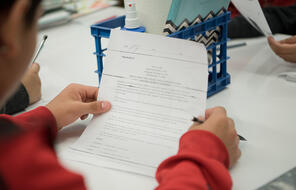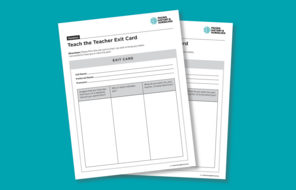
Our Names and Our Place in the World
At a Glance
Language
English — USSubject
- Advisory
- Civics & Citizenship
- English & Language Arts
- History
- Social Studies
Grade
6–12- Culture & Identity
- Equity & Inclusion
Overview
About This Activity
Learning one another’s names and their correct pronunciation is an important task in the first days of the school year. The experience of introducing oneself to a new group can cause anxiety for many students, and the way in which their name is received by their peers and teacher can be a first step in creating a sense of belonging. This activity asks students to read and discuss a high school student’s essay about introducing herself to a class at a new school and provides an opportunity for collaboration and community building.
Preparing to Teach
A Note to Teachers
Before teaching this activity, please review the following information to help guide your preparation process.
Procedure
Steps for Implementation
Extension Activities
Materials and Downloads
Quick Downloads
Download the Files
Get Files Via Google
Our Names and Our Place in the World
Unlimited Access to Learning. More Added Every Month.
Facing History & Ourselves is designed for educators who want to help students explore identity, think critically, grow emotionally, act ethically, and participate in civic life. It’s hard work, so we’ve developed some go-to professional learning opportunities to help you along the way.
Exploring ELA Text Selection with Julia Torres
On-Demand

Working for Justice, Equity and Civic Agency in Our Schools: A Conversation with Clint Smith
On-Demand

Centering Student Voices to Build Community and Agency
On-Demand


















